
I thought it would be fun to post the original reviews of Dangerous Visions. I remember 1967 well, but far from perfect. I subscribed to these magazines at the time, and I’m fairly sure I read these reviews. I remember in both the prozines and fanzines how the excitement for Dangerous Visions grew. It became legendary in its own time.
For me, these reviews are a blast from the past that remind me of my own life. More and more I identified with the science fiction community. I hope these reviews might reveal the past to younger people just now discovering Dangerous Visions. To me, DV is a time capsule for understanding 1967 that goes beyond the subculture of science fiction. Although science fiction often appears to be about the future, it’s always about the present.
First up is Judith Merril in the December 1967 issue of The Magazine of Fantasy and Science Fiction. That month was also significant to me because it’s when I went to see The Graduate at the movies. It was its own kind of dangerous vision. I believe all the arts were going through a revolution back then.
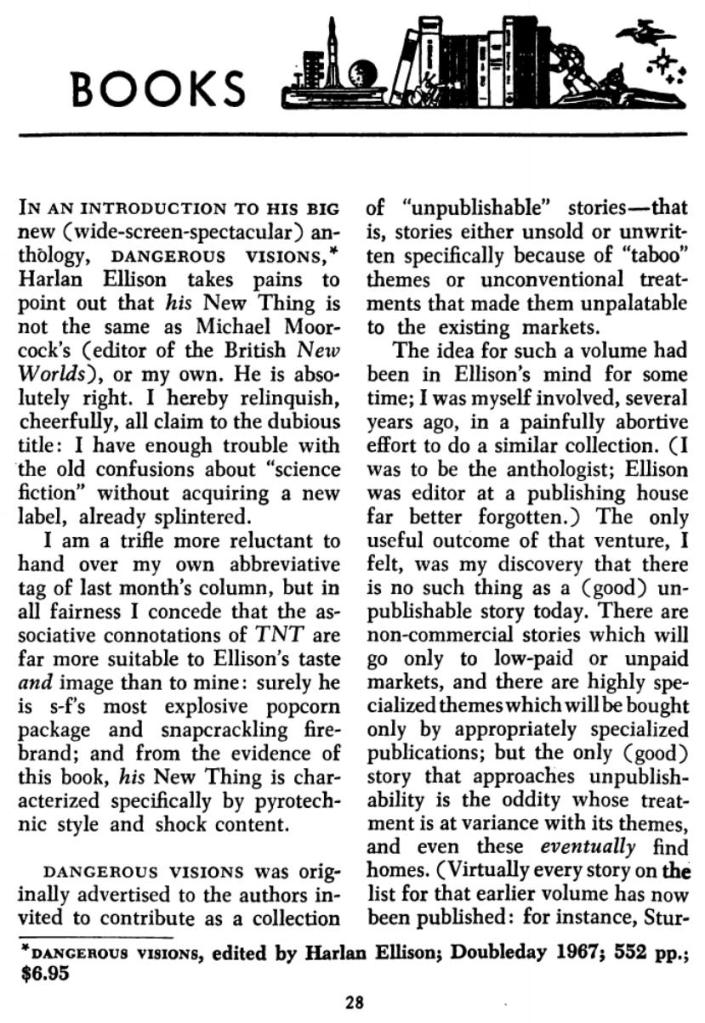

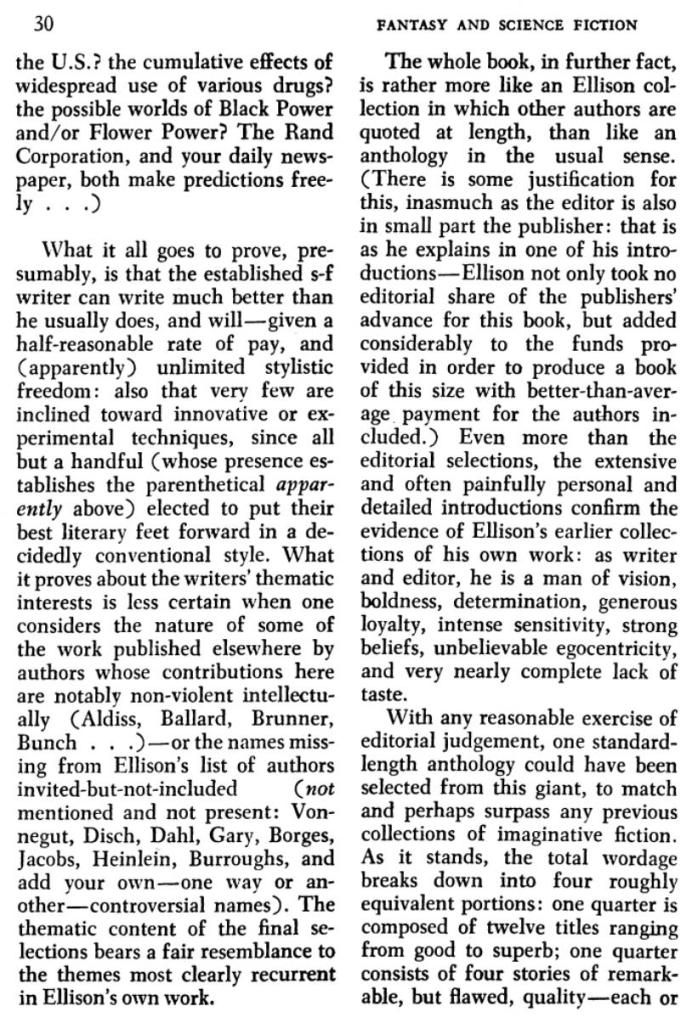
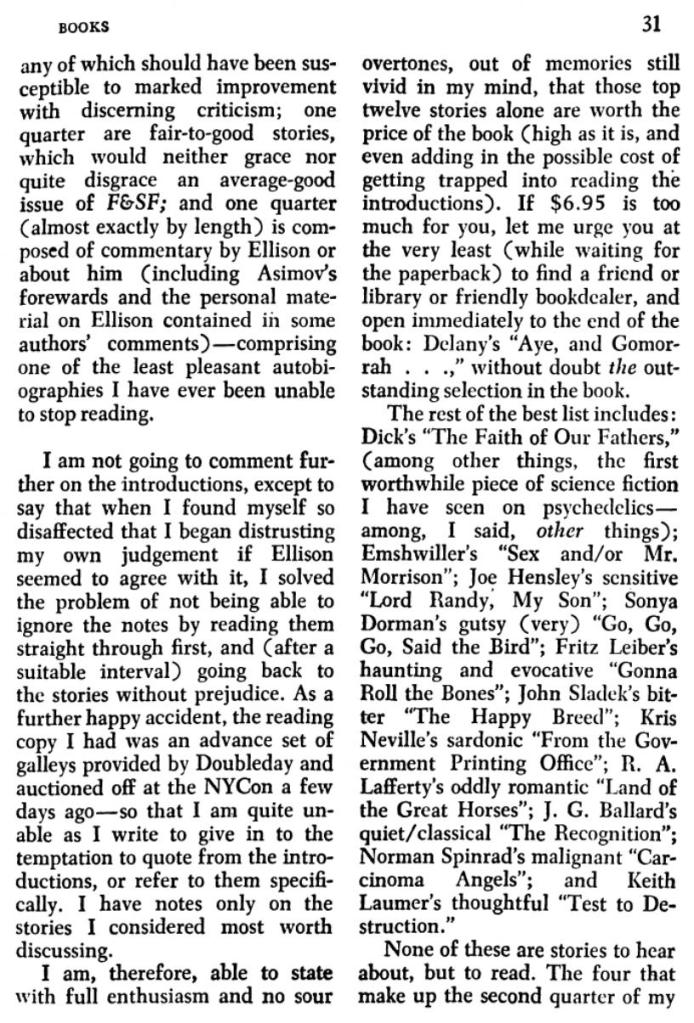
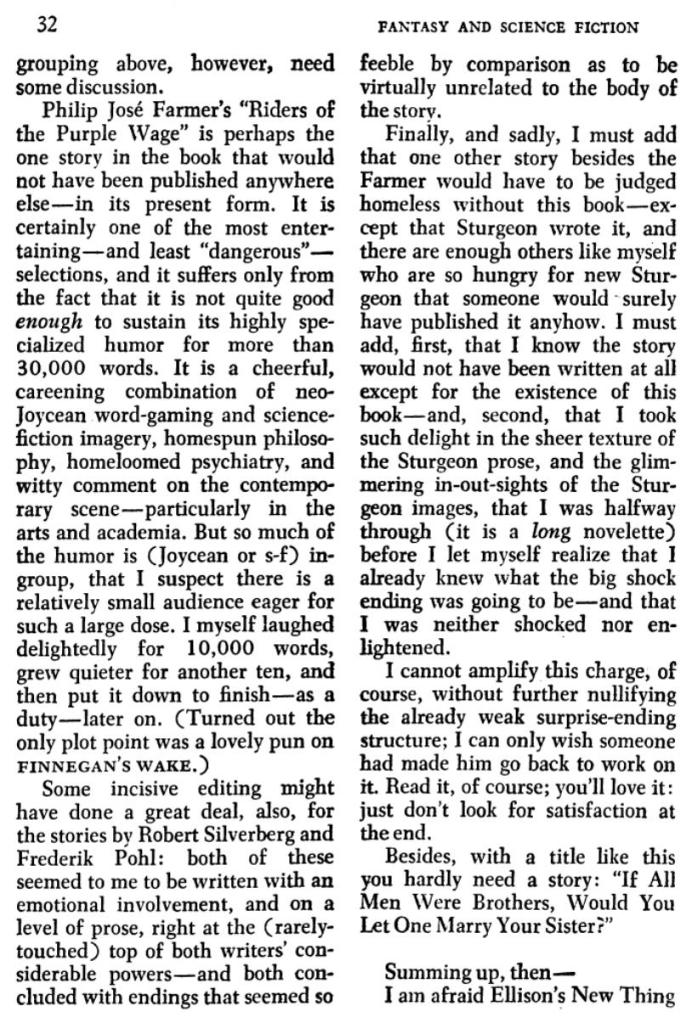
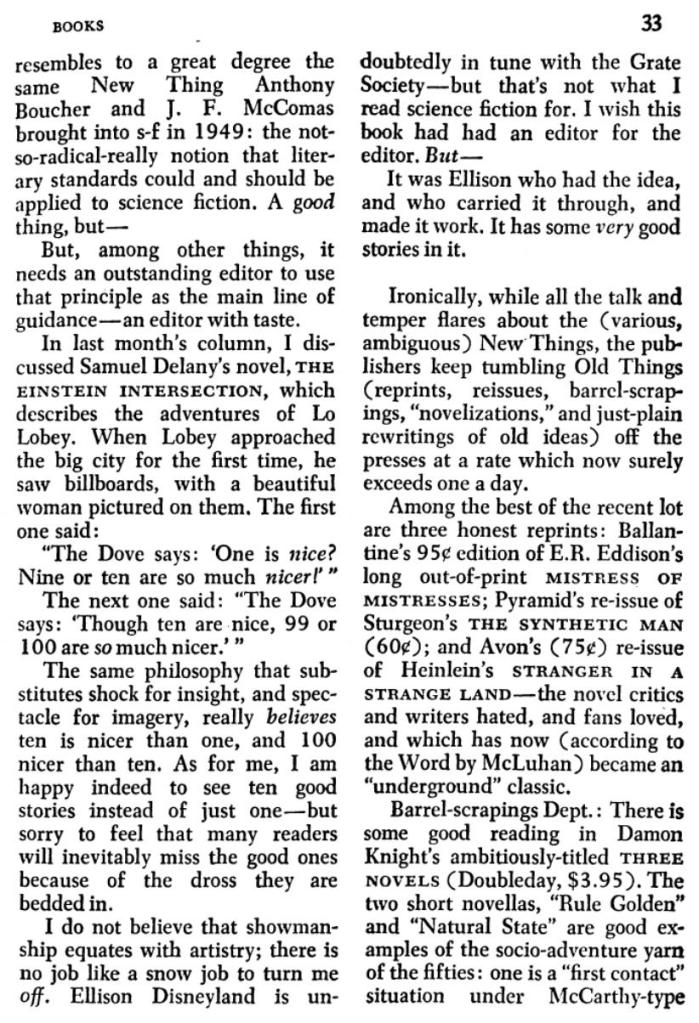
Next up is Algis Budrys, in the April 1968 issue of Galaxy. That seemed like a late review. I wonder how Merril got such an early jump on things?
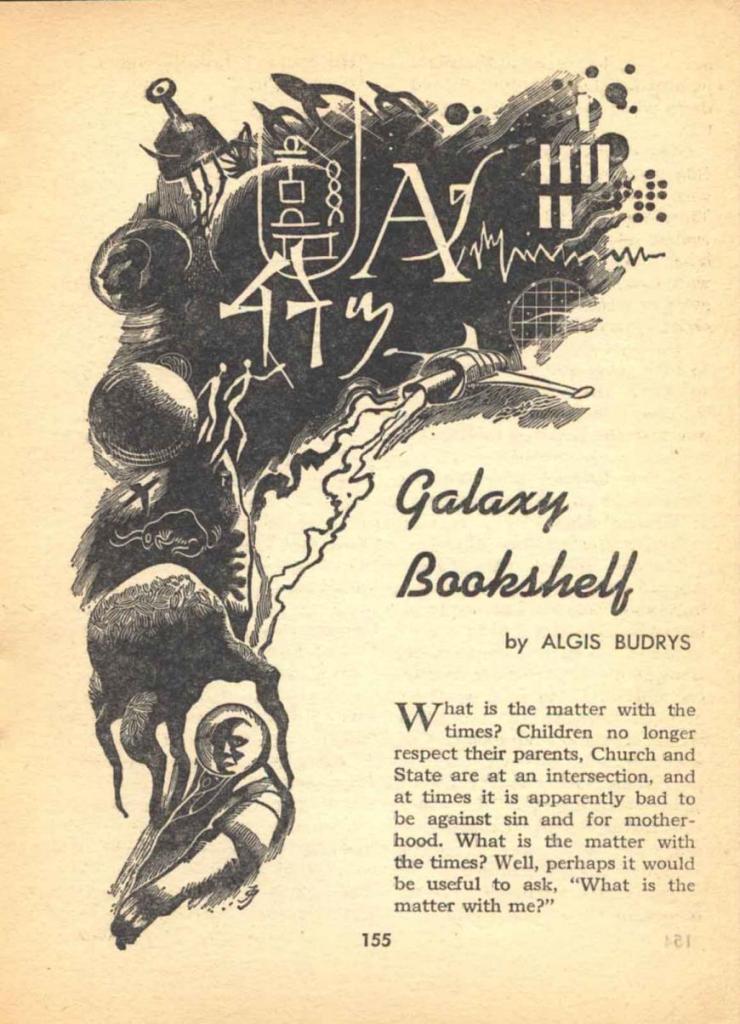
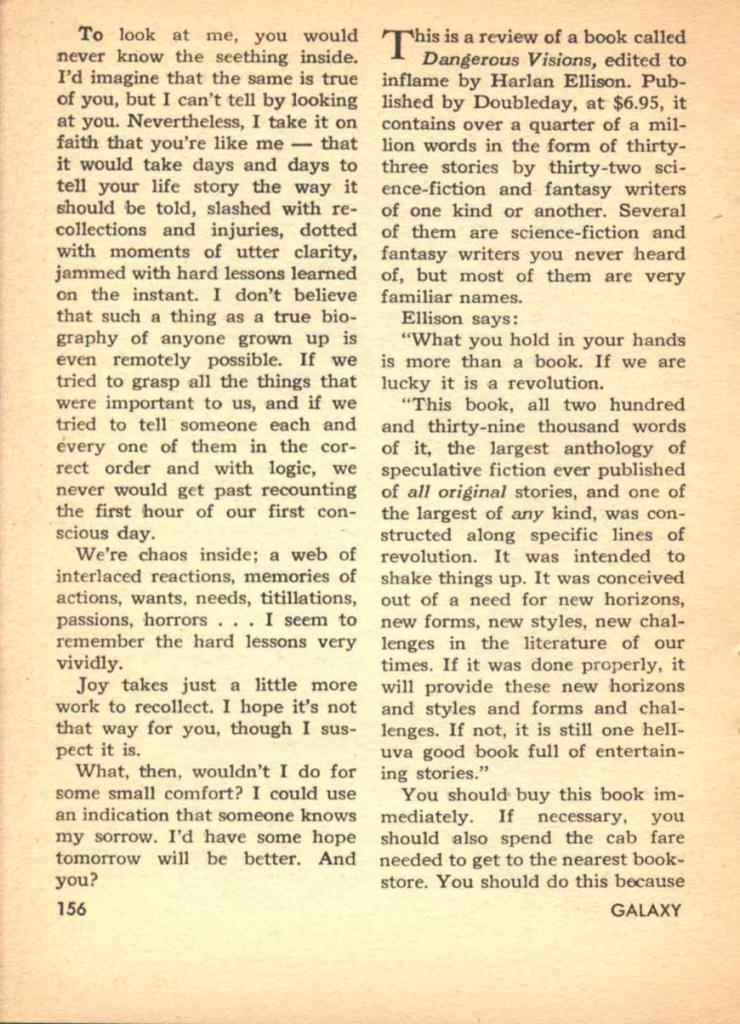



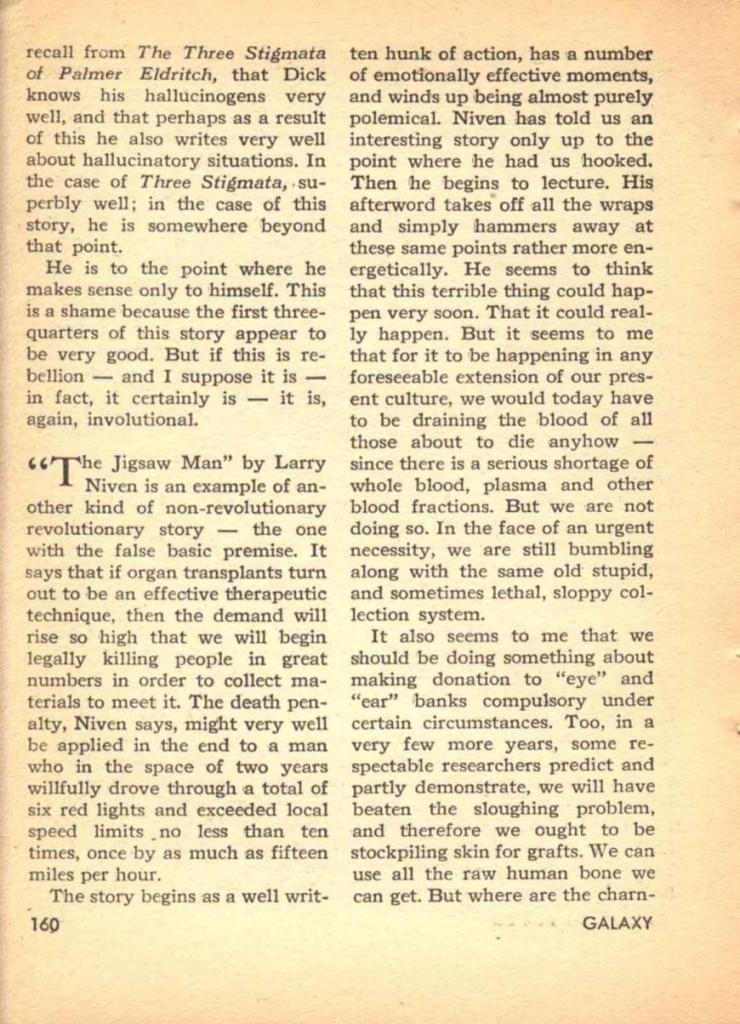

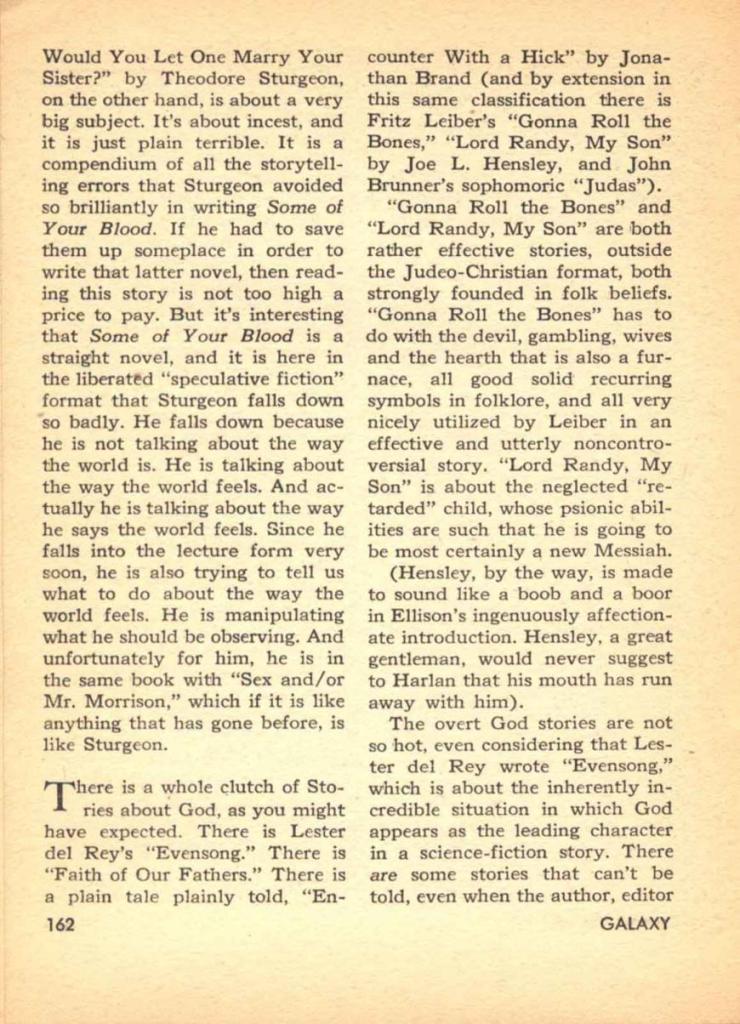
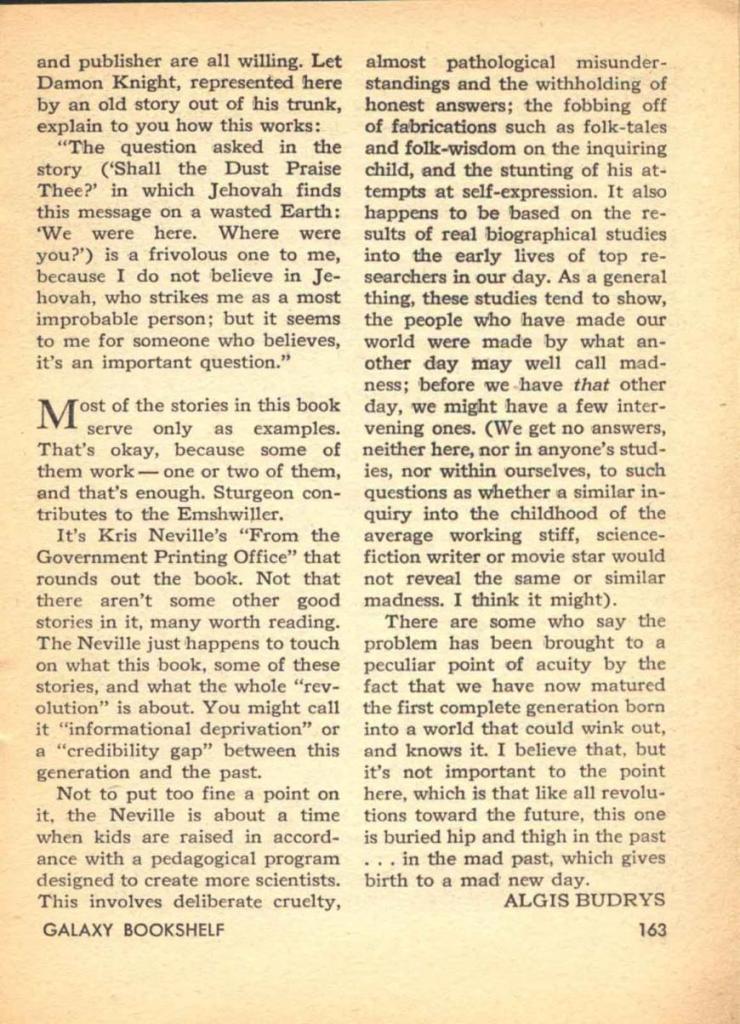
Finally, there’s P. Schuyler Miller’s review in the May 1968 issue of Analog.


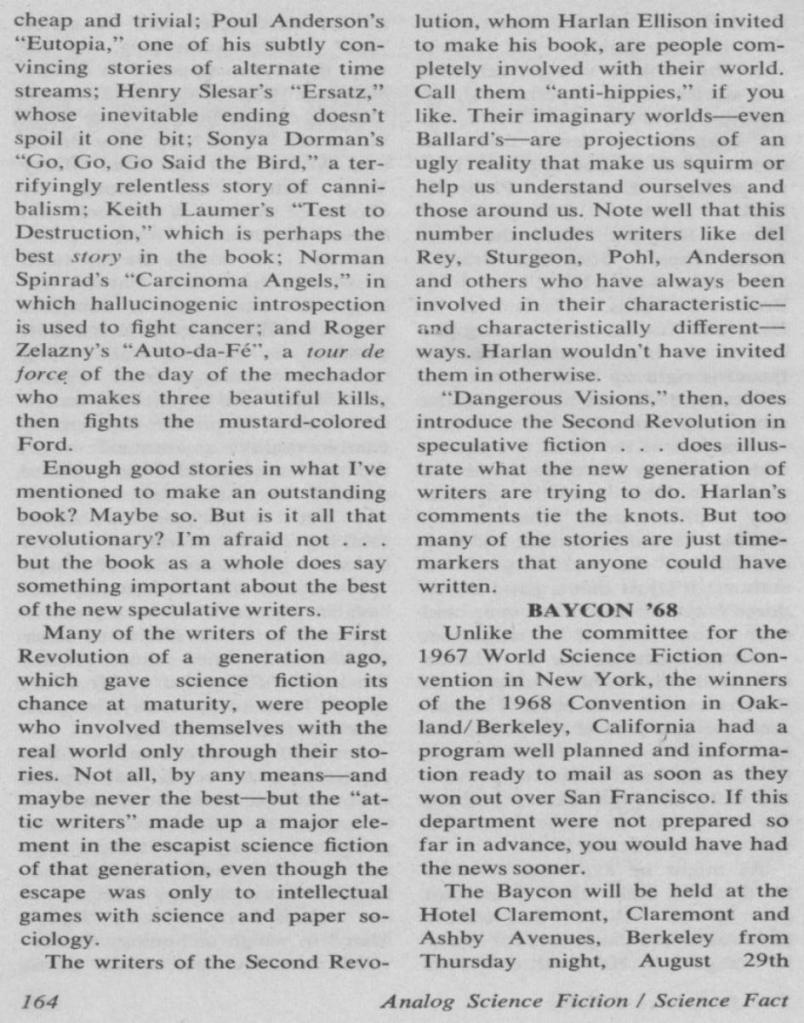
James Wallace Harris, 5/26/24
You’re missing page 158 of the Budrys review.
Merril got a jump on things because, as she says, she had a set of advance galleys. Back in the day, review copies were usually actual copies of the printed book, which took longer. Reviewing books was generally slower but more fun then.
LikeLike
Thanks John, for catching that. I was able to add it in.
I always assume reviewers got early copies so their reviews would coincide with the publication date.
LikeLike
They did, but they generally got copies of the actual book, sent out before the nominal publication date. Somebody at Doubleday probably had the idea that Merril was somebody who should get an even earlier look at it. That presumably would have been the very knowledgeable Lawrence Ashmead, who ran the Doubleday SF line at the time. He had published Merril’s New Wave anthology ENGLAND SWINGS SF the following year.
Review copies were part of the culture of publishing back then–at the impecunious end. Book reviewing was never lucrative, but review copies were distributed fairly widely, and their recipients would supplement their incomes by hauling them in to the Strand Bookstore in New York, which would buy them for 25% and sell them at 50% of list price. The store had quite a large section of these, and for a long time I would keep a list of books I wanted and look for them every week or two–and almost always found them at some point. This was great for me, but not so great for the authors, so I gave up that practice after I had been working for a while and had no excuse for not paying royalty-bearing freight. The Strand review copy section had shrunk to almost nothing the last time I was there (some years ago), presumably because the number of actual review copies–as opposed to the pseudo-books we know as ARCs–had drastically diminished. (The Strand has some of them, too–in the Rare Books Room. That is, if they are by Stephen King or the like.)
LikeLike
Many thanks for these reviews, Jim! I’m slowly working my way through the stories in DV and ADV (like many other anthologies on my shelf), so maybe I’ll come back to these reviews when I’ve read more of the stories.
I first discovered these anthologies when I was in high school in the late seventies, so the late sixties was before my time, although I’ve always found it a fascinating era. In a sense the DV/ADV anthologies are for me like any other SF anthology. I like some stories (those I’ve read) more than others, but I’m not really concerned with how “dangerous” they might be.
However, I don’t entirely agree with your remark, “Although science fiction often appears to be about the future, it’s always about the present.” Of course SF (or any other kind of literature) is very much about the time in which it was written, but I think SF as a genre is also fascinated by the idea of the future, as if it were a real place which it hopes to visit or bring closer. Maybe this was more true of SF of earlier eras. John Clute discusses this in his introduction to Interzone: The 2nd Anthology (1987).
LikeLike